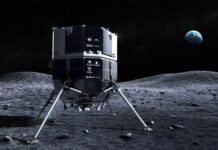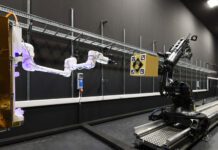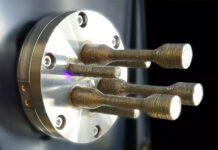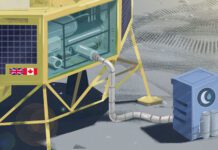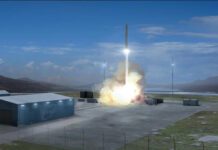
UK-based space technology company SmallSpark Space Systems has received £76,000 in funding to develop a propulsion system for its S4-SLV space tug. The funding is allocated for a period of three months.
The S4-NEWT-A2 engine is a simple bipropellant propulsion system. The engine will be equipped to the company’s S4-SLV space tug that SmallSpark intends to utilize as a workhorse for payload transportation services to and even from cislunar orbit. SmallSpark is also planning to enable in-orbit refueling, allowing each of its space tugs to service at least 50 payloads over its lifetime. Once retired, each vehicle will be deorbited carrying space debris down with it.
“We’re working to build the equivalent of public transport for satellites, with regular trips providing power, comms and mobility as needed by customers,” said SmallSpark CEO Joseph Ward
The UK Space Agency project will lay the groundwork for a 2024 demonstration mission of the S4-SLV space tug. The flight will be a landmark moment for the country, as the first mission to the Moon utilizing technology designed, built, and possibly even launched within its borders.
Although SmallSpark is also developing its own launch capability, the space tug will be launch vehicle agnostic allowing the company to begin cislunar transportation services in the shortest timeframe possible. However, once the company’s Frost-1 launch vehicle is operational, the space tug will be utilized as a flexible upper stage.
Interview with CEO Joseph Ward
Apart from a traditional OTV role will S4-SLV be adapted for other roles like debris removal or in-orbit servicing?
Possibly in the future. It’s hard to be competitive across multiple domains in parallel. Our long-term goal is for SLV to be a workhorse, but our vision is set on lunar logistics. First with small payloads, but rapidly expanding to transporting larger 100+ kg payloads for surface operations.
What is the reason that you focused on cislunar transportation and not Earth orbit transportation like most other OTV operators?
The LEO OTV market is beginning to look a little crowded. We want to focus on working toward where the market is going, not where it currently is. Our goal is to be the go-to supplier for businesses that want to participate in the lunar economy, but don’t want to have to wait for a dedicated lunar launch. We want to give businesses control of the schedule for when they fly their lunar missions.
What makes S4-SLV unique from its competitors?
A few things; the one we want to talk about the most at the moment are our NEWT-A2 engines – these will be the simplest biprop engines ever used in orbit. If you want a reliable vehicle, the key is to simplify where possible. That’s what we do; simpler hardware and smarter software. We are also utilizing our mooreAI software to assist in the design of SLV. It’ll be truly co-designed with AI.
What orbits will the vehicle service?
To begin with, we are focusing on lower-energy lunar return orbits. As we grow in confidence and improve our engine’s performance, we hope to eventually have specific popular lunar orbits in our capabilities, and from there we will seek to remain agile.
What is the vehicle’s max capacity in kgs?
Early versions will be very low; on the order of 10-15kg; it helps keep things simpler. Future versions will be focused on enabling surface missions, so will aim to carry closer to 75kg.
What type of satellites will the vehicle cater to (e.g. pico, cube, nano, small, etc.)?
Pico and Cube to begin with, but with the goal of larger payloads in a few years.
Are you in talks with any customers for S4-SLV?
We’re very much open for business with SLV and encourage interested smallsat companies to get in touch with our business development team via our website, or find them at most space conferences!
How are developments on Frost going? Are you approaching any major development milestones?
The main focus on Frost is on maturing larger propulsion at the moment; though we are finding the need to invest more heavily in facilities that the UK lacks. This is a partial motivator to focus primarily on SLV while we grow our own independent, larger scale testing capabilities.


